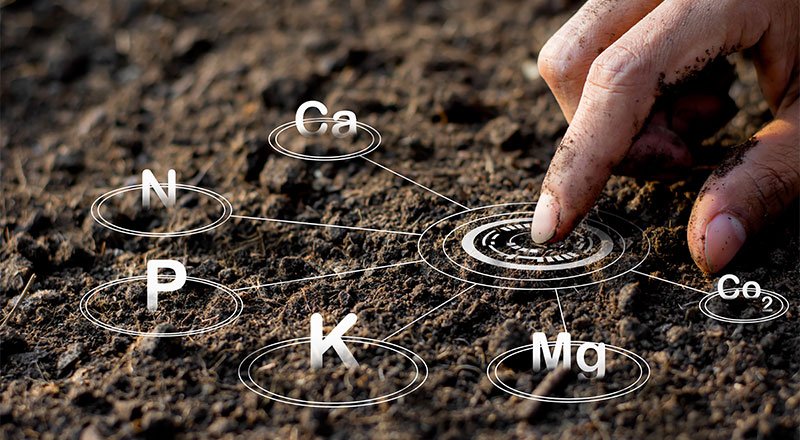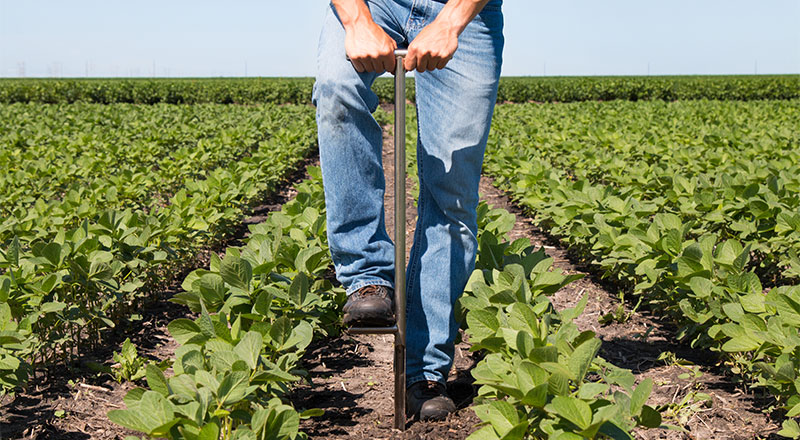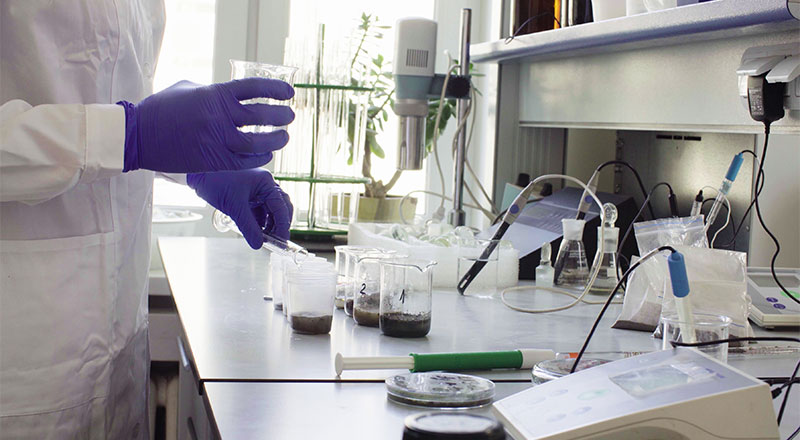-
SAP® analysis

SAP® analysis offers a highly accurate and topical assessment of the true nutritional status of the plant.
Whereas conventional tissue testing reports the level of nutrients in a sample, including those locked up and unavailable for growth in cell walls and storage cells, SAP analysis measures only the actual level of crop nutrients available for plant growth.
OMEX offers a full nutritional analysis service using the facilities of the Scientific Agricultural Partnership (SAP®) laboratories in King’s Lynn.
The laboratories specialise in the extraction, analysis and interpretation of sap samples taken from growing plants.
Individual interpretation of each sample result is carried out by a team of qualified agronomists, allowing recommendations to be made for the active nutritional management of the crop.The Facts
- SAP is a unique service using purpose built laboratories and sap extraction process.
- 17 parameters are analysed to give a complete picture of the plant’s nutritional status.
- The crucial database used to interpret the sap analysis results has been built up over 50 years.
- On farm trials have shown improvements in marketable yield and quality when the SAP system is used
The SAP System
The full SAP system begins with an initial complete soil analysis, base fertiliser recommendation (applied as a bespoke suspension fertiliser, if appropriate) and up to 5 full spectrum SAP tests at programmed intervals during the growing season.
SAP Health Checks
Alternatively, one-off health checks can be provided on a wide range of crops, with a rapid turnaround of results. The recommendations are emailed or faxed within 2-3 days of receipt of the samples, making it an excellent management tool for the grower.
SAP Analysis
- The SAP analytical report will show the level of No3, NH4, P, K, Mg, S, Ca, Na, Cl, Mn, B, Cu, Fe, Zn, Mo, Al, and pH
- The report provides an easy to interpret bar chart, with agronomist’s comments.
When and How to Sample
- SAP sampling procedures are crop specific. Full details and sampling instruction are supplied in the ‘SAP Pack’.
- Sample when problems are seen, when the crop is under stress, or prior to a growth surge.
- Sample in a representative manner, either in a pre-marked ‘W’ or in a straight line.
- Sample early in the morning before the dew has lifted.
- Select the oldest actively growing leaf and petiole from at least 20 plants.
SAPMIX
If necessary, a tailor-made product can be manufactured based on the results to suit specific crop or growing conditions and to help plants achieve maximum yield and quality potential.
Full details of the sampling technique are contained within the SAP Packs.
How it works

SAMPLING
PREPARATION
ANALYSIS
RESULTS
APPLICATIONSoil Sampling Services
Soil sampling and analysis is a free service to OMEX customers.
Fields are sampled according to industry standards and analysed by PAAG-member laboratories.Why Is Soil Sampling Important?
Soil sampling can earn money by indicating the correct fertiliser analyses required for crops and identifying yield-limiting deficiencies.
Fertile, well maintained soils are more productive than those with marginal soil indicies and the crops grown use nitrogen efficiently, reducing the risk of environmental pollution.
Soil sampling saves money by indicating where nutrients are not required, particularly phosphate, potash and sodiumWhat Does A Routine Soil Sample Analysis Include?
Phosphate, potash, magnesium and pH. It is also possible to include boron, sodium, sulphur, copper and zinc analysis. Soil nitrogen testing is also available from OMEX by prior arrangement.
How Are The Results Reported?
The index system developed by Defra is used by all laboratories when they report results. In order to show whether a result is near the top or bottom of an index, OMEX report to one decimal place.
The soil nutrient status is displayed as colour coded easy-to-interpret horizontal bar graphs. Results are available as printed copies, emailed files or as data for uploading into farm recording software.
What Does It Cost?
There is no charge for soil sampling from OMEX, unless there is no purchase of fertiliser following the testing.
How Often Should I Have Soil Sampling Carried Out?
Well managed fields usually only require sampling every four to five years.
Best Practice And Integrated Crop Management
In order to follow best management practices it is vital to know the nutritional status of the soil, only possible after regular, quality soil sampling.
Does It Matter Who I Ask To Do My Soil Sampling?
Yes it does. Correct soil sampling is fundamental to good agronomy.
The OMEX service ensures that a minimum of 25 cores are taken to provide a truly representative sample of the sampled area.
OMEX follows the Defra guidelines for soil sampling, taking the most accurate sample path across the sampling area.

Support and Services
The OMEX team is equipped with FACTS qualified agronomists, highly skilled trials officers and expertly trained lab technicians. OMEX offer a full range of services to help support the grower in achieving maximum yield potential.



